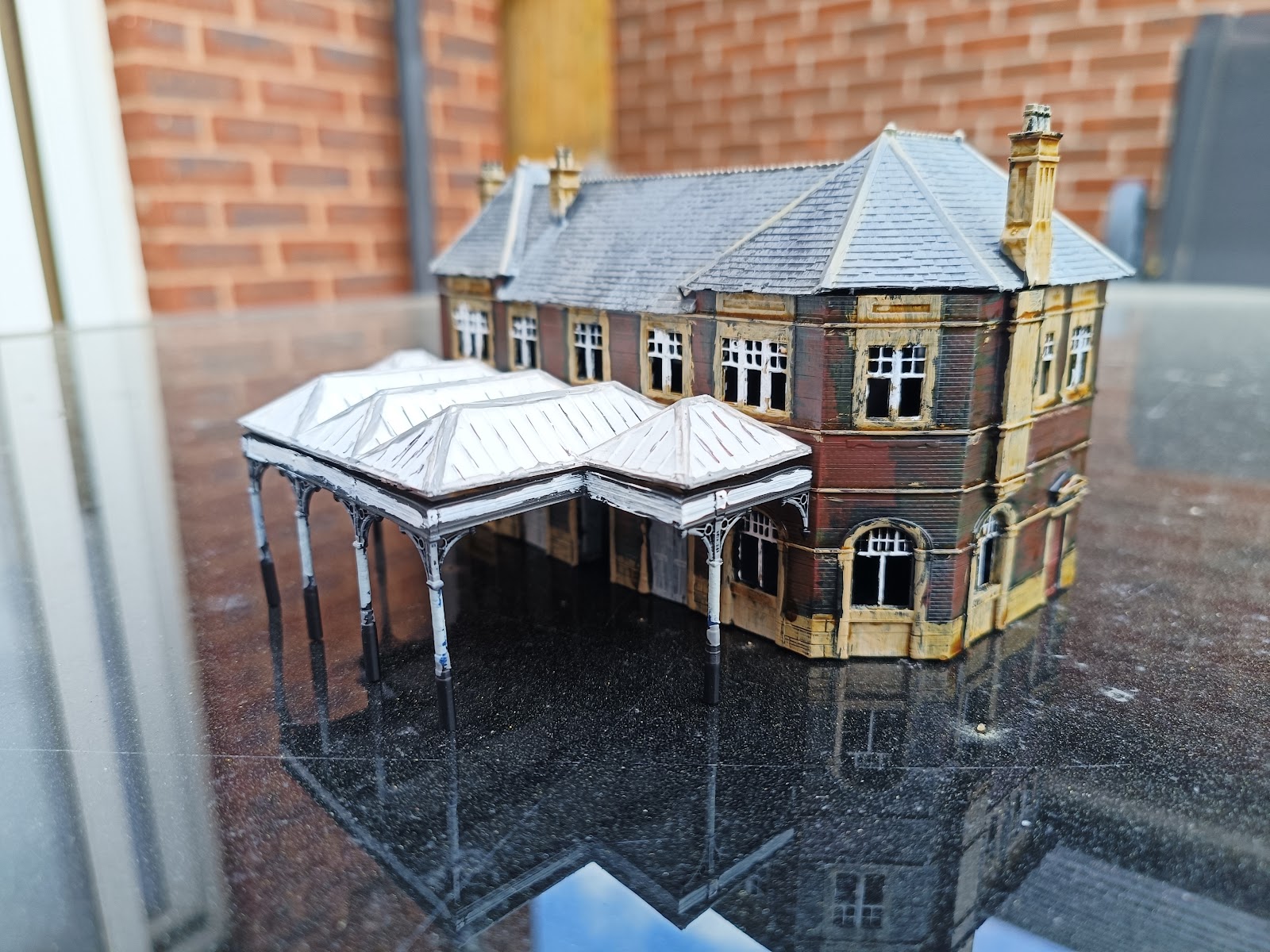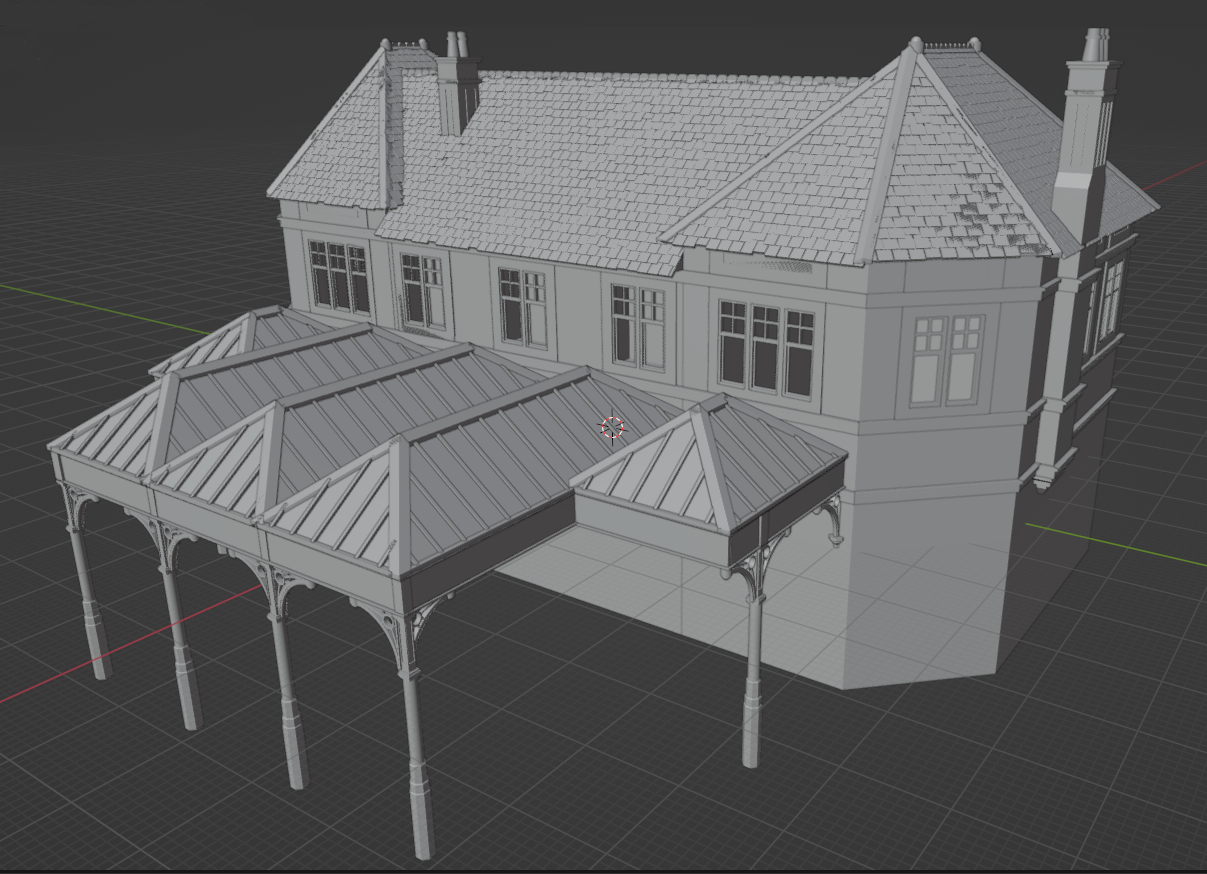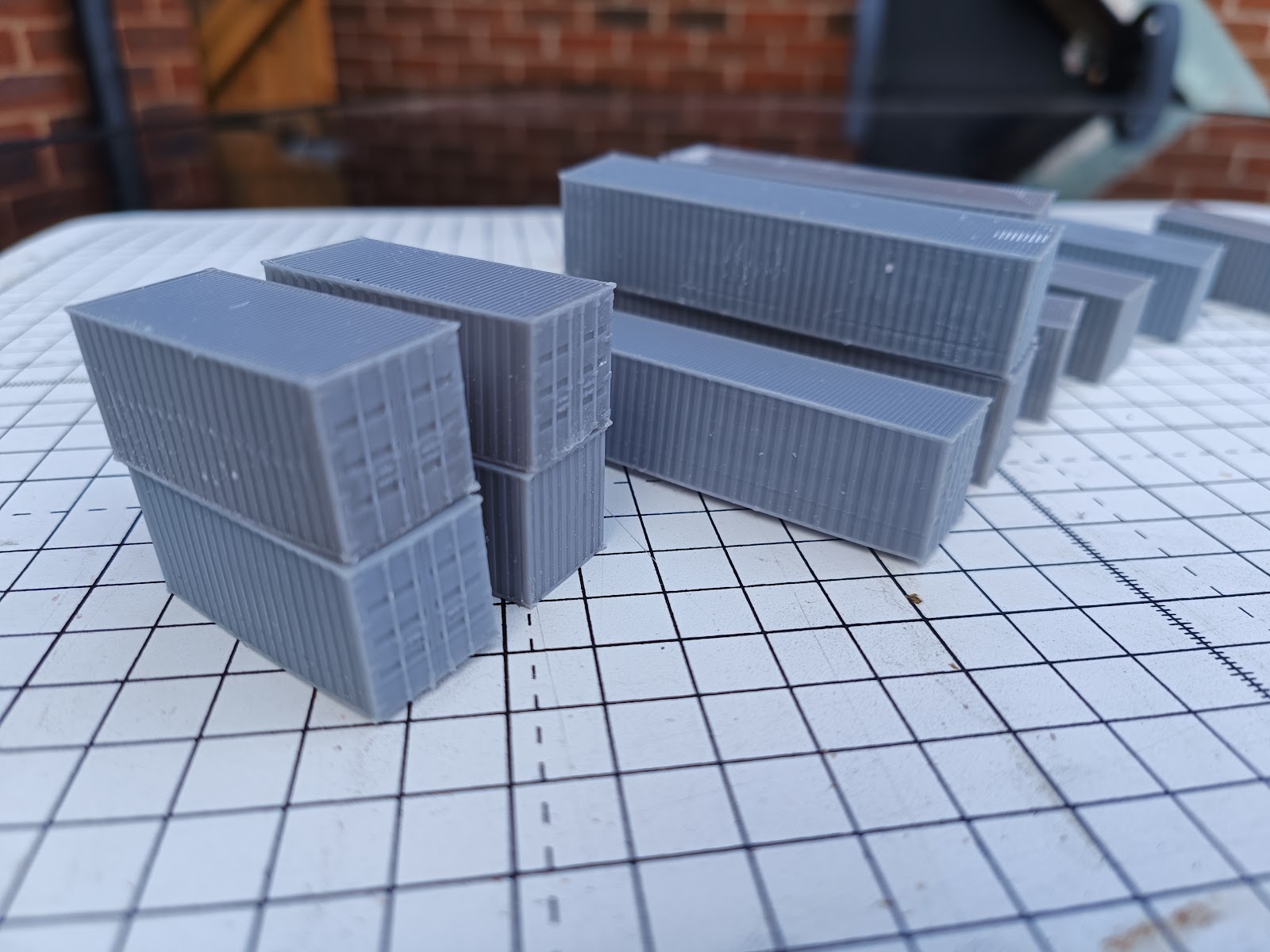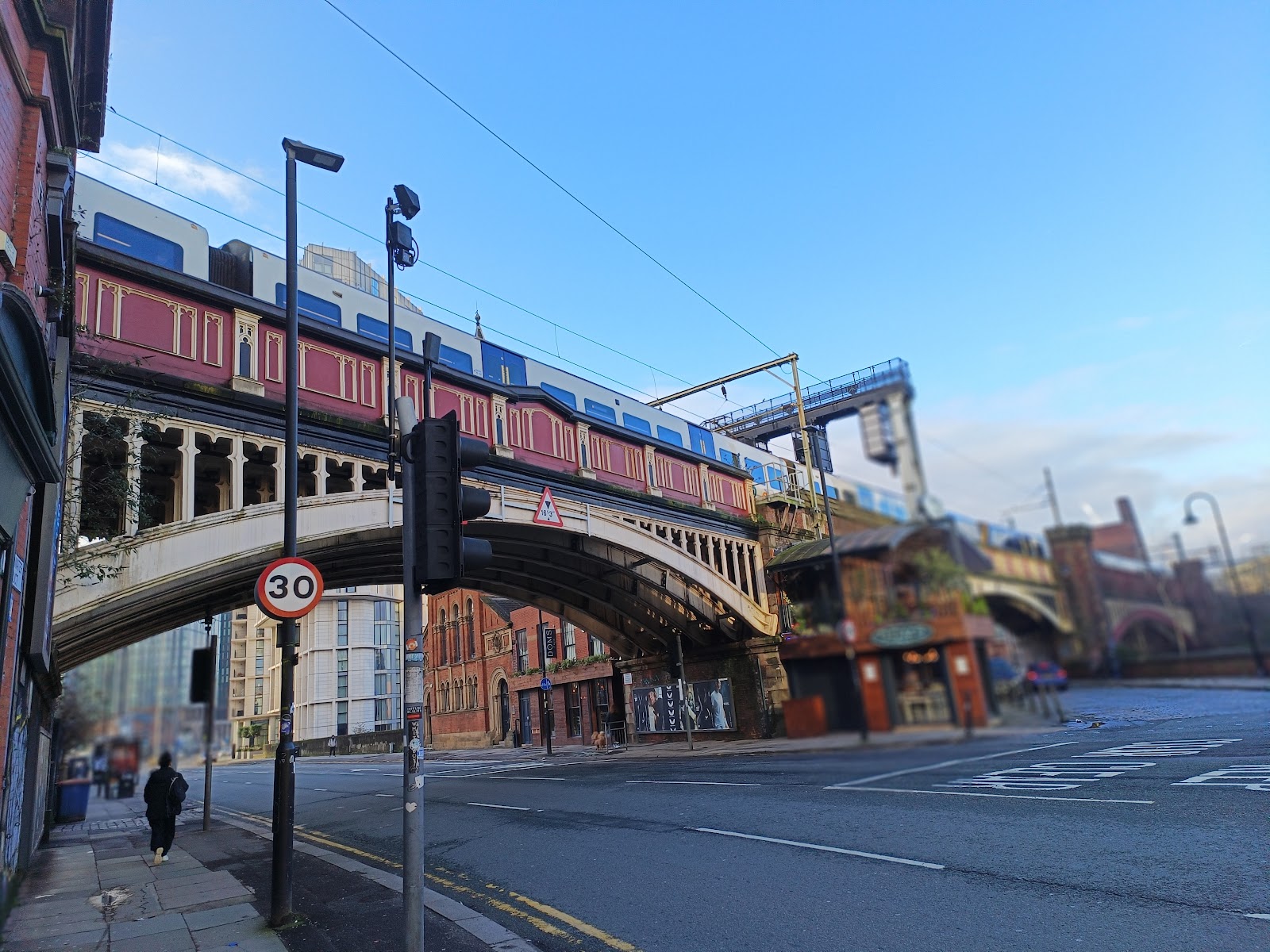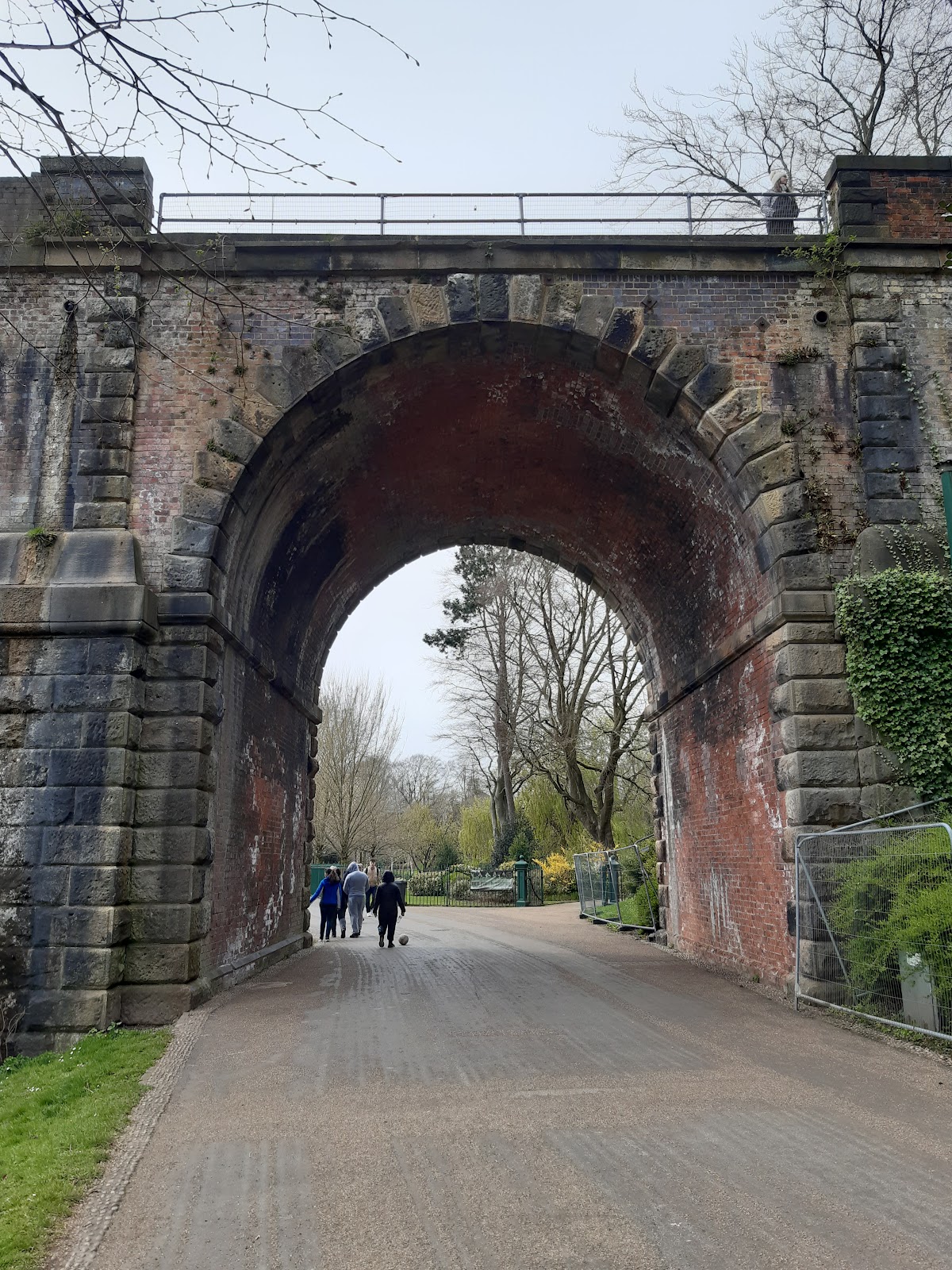Wigan Wallgate Prototype Study
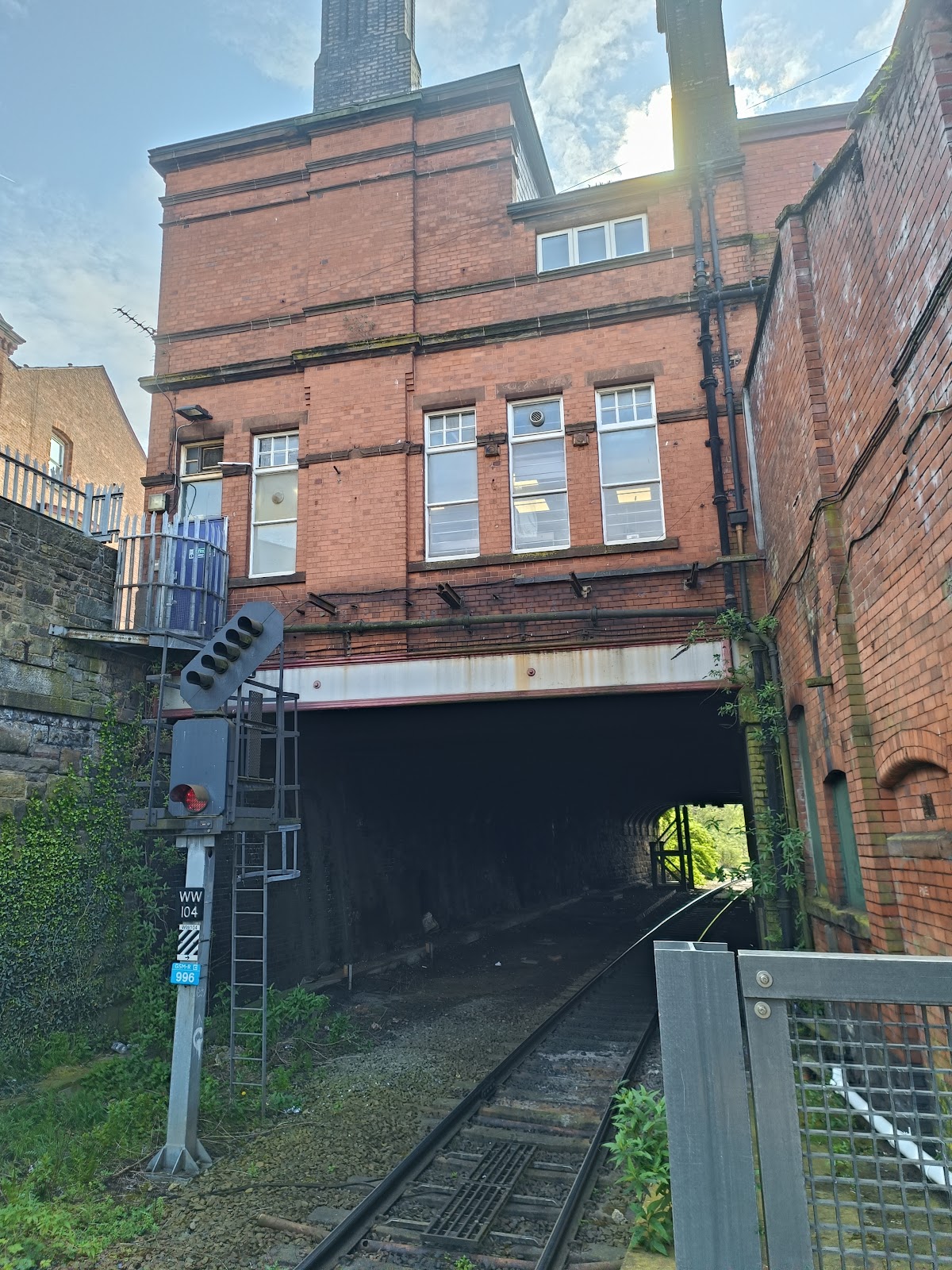
I could do the main building from Google Street View and Google Earth, but the platform level buildings an infrastructure were not possible, so I went in person. This is the "up" line as it disappears under the station building. I had been expectimg the platform to go further this way, with the station on columns over the platform, but that is not the case, and it is a solid structure. On the other side. Again, t station building is supported by a steel girder. The stairs are not aligned with the roof. They slope at different angles, and at different times. The slopin roof is glass, but not clear. The platform building was rebuilt in ca. 1977. The station has a bay platform. I am not sure how much it is used - i would guess trains from the south are more likely to terminate here (the one in the image is doing just that). The track is in good condition however. The station had a canopy that extended for some distance over the bay platform at one time, though it had been choppe...
